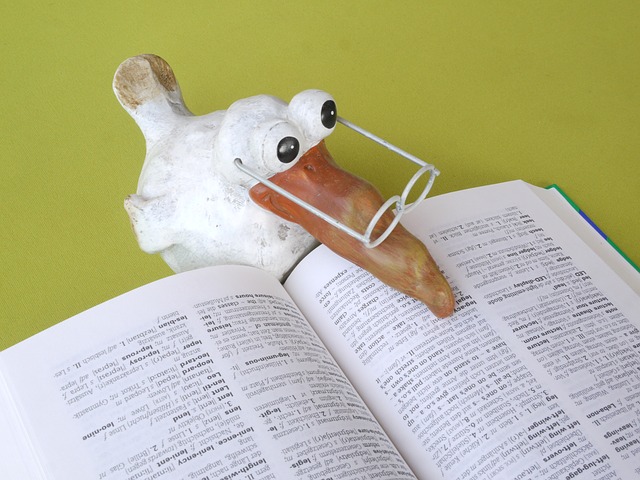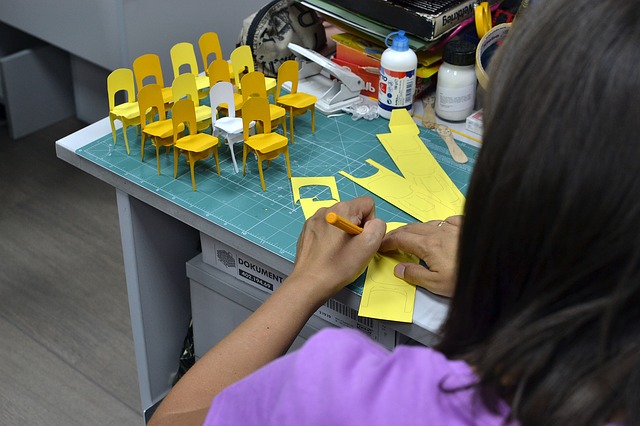The History of Spelling Practice, Methods, and Tests
Just hearing the words spelling test can cause students to groan in despair. Yet spelling test is a hugely valuable learning tool that doesnâ™t have to be a chore, students are often afraid of spelling practice!
Literacy skills are interrelated, with reading, spelling, and writing all influencing each other.
If one is aspect neglected, then all of them suffer.
Teaching methods for literacy have changed over the decades, with the emphasis shifting between the different skills and spelling practice.
The most prominent type of spelling test in the modern day is probably the Spelling Bee.
It not only receives national television coverage in the U.S. but also supports a huge industry offering scholarships and cash prizes to competition winners.
Spelling bee tournaments show the glamorous side of spelling. Check out this article from a Spelling Bee champion himself.
But for most students, spelling tests can be a real struggle.
How Can Parents Help the Kids with Better Spelling Practice?
The first step is to find out whatâ™s really going on in our schools. It is essential to how teachers teach spelling and what educators suggest for better spelling practice.
So letâ™s take a look at the methods and history of teaching and testing spelling.

Let's hope that you can make an informed decision about your childâ™s needs.
Types of Spelling Tests
There are four main types of a spelling test, each of which focuses on a different skill:
Oral tests
Students are given the word by the teacher to spell out loud.
It is the format weâ™ve seen in spelling bee competitions and requires students to spell each word individually, often in front of an audience.
This puts a lot of pressure on spellers, especially on those who lack confidence, as mistakes are very public.
Aural tests
Students listen to the teacher read a word, and then write it down.
Typically, the teacher will just read a list of individual words that a student has to spell. Although, they may also choose a read a dictation test passage to include full sentences and punctuation in the test.
Proofreading tests
Students are given a written text to read, with mistakes in spelling.
As they read the passage, students try to correct any spelling mistakes they find.
Proofreading tests aim to present learners with language in context.
It often relies on the passive acquisition of spelling skills, focusing on reading ability rather than direct spelling techniques.
Multiple-choice tests
Several alternative spelling options are presented for a word, with students made to choose the correct one.
These tests are often based on a reading text and can be useful to check the knowledge of homophones.
Sometimes, students choose the right spelling of two words that are pronounced the same way but differ in spelling and meaning.

Nevertheless, they donâ™t require a student to apply spelling practice actively. The methods tend to focus more on reading, with only an indirect spelling component.
Development of Spelling Practice and Tests Over Time
Literacy education for the masses is a relatively new development in human civilization, with only about a century or two of history.
Despite this short time span, approaches to teaching reading and writing have changed significantly over the years.
Just like any other industry, schooling is subject to fashions that come and go.
Methods for spelling practice are no exception!
Parents and educators start to question modern theories and turning back to traditional approaches.
Letâ™s have a brief look at the development of spelling practice over the last hundred and fifty years:
Memorization and Rote Lists
Much of the formal spelling education in the 1800s and early 1900s was taken from spelling books. Typically, they contained lists of words for students to memorize.
One of the first and most influential books for teaching spelling was the âBlue-backed Speller."
It is a masterpiece by Noah Webster, author of the classic Websterâ™s Dictionary.
Such texts aimed to teach pronunciation, grammar, and reading as well as spelling.

The major drawback was that the presented vocabulary wasnâ™t graded or tailored to different reading levels.
So, the beginners faced high-level and complex vocabulary even before they could master the basics. For example, a child should only be exposed to 8th grade vocabulary words after successful completion of 7th grade vocabulary words.Â
Noah arranged words in seemingly random lists or listed in alphabetical order. However, it didn't regard a studentâ™s prior learning.
Learners had to memorize words by rote!
Also, they had to fulfill the demanding task of learning grammar, meaning and concepts at the same time as trying to memorize spellings.
Lists Arranged by Word Frequency
Webster continued to revise his spelling books and eventually came to arrange his lists by frequency of use and spelling patterns.
However, it wasnâ™t until the 1930s that educators arranged words by difficulty and learning level.Â
The trend of arranging words in order of the frequency of use became more popular.Â
But why?
Now, students were able to develop their spelling ability for core vocabulary items. Before, they learned obscure and complicated words that they would hardly recognize let alone apply in their daily lives.
So, you should ask your kids to have a better grasp at these sight words as these are the most commonly seen words in the English language. Then, they should gradually be introduced to adult vocabulary words.Â
Changing Trends in Spelling Practice: The Revolution Had Started!Â
Up until this point, students simply learned spelling patterns by writing, repetitive re-writing, and rote memorization of vocabulary.
Try this vocabulary tester to understand your current skill level!
However, that changed as new theories emerged about the best way to learn how to spell a word.
To meet the individual needs of each child, teachers asked students to create their own notebooks to record words.
Another approach was to ask students to write words exactly three times.
So that they can create a visual memory of the letter forms and overall âshapeâ of the word.

It was found that any more than three repetitions at a time for each word was actually discouraging for students and counterproductive to learning.
It was during this era that the famous âlook, say, cover, write, checkâ study method was invented. Â
There are a few variations of this technique, but the basic procedure is that students
- First, look at the word,
- Say the word aloud,
- Cover it with their hand or a piece of paper,
- Spell the word verbally,
- Write it, and
- Finally, uncover it to check whether spelled it correctly.
A New Way of Testing
Around the 1950s-60s, educators started to question traditional testing methods. Mainly because students had to memorize up to 50 new words per week for a quiz.
It was suggested that students should take more control of their own learning. The idea was to give them a balance of old and new words for them to practice per week.
Thus was born the âtest-teach-testâ approach.
In this method, students took a test on Monday.
For example, then given time during the week to practice the material, and tested again on the same material on Friday.
This allows students to recognize their existing knowledge and focus only on the areas in which they made mistakes. Also, it provided encouragement as students can clearly see their progress from week to week.
Researchers discovered that the best results were produced by several short practice sessions between tests, rather than one long lesson.
Recognizing Patterns in Language
These days, it seems obvious that we can observe phonemic patterns in English whereby the pronunciation and spelling of words are related.
For example, we can look at the letter "a" and recognize both its associated sound as well as its visual shape.
While there were some early proponents of a phonemic approach for teaching in the 19th century, other educators didnâ™t think it should be taught at all.

A 1984 U.S. National Academy of Education report found that using such a system, dubbed phonics, improved students ability to identify words.
Although mainly intended to teach reading, students were now instructed to âsound it out!â in case they were unsure.
Phonics can be used to teach words (and letters) in isolation but also allows for the use of context and longer texts.
An Integrative System: Looking at Language in Context
From the 1980s until the current day, a new approach to literacy education has become influential. Finally, we actually got an approach that dispenses with formal spelling practice altogether.
According to this integrative system, spelling, reading, grammar, and punctuation shouldnâ™t be taught as separate functions
In fact, it shouldnâ™t be acknowledged at all.
Instead, they should be assimilated into texts which present the information in a natural way. So that students can âabsorbâ these literacy skills through exposure rather than explicit instruction or study.
This theory purports that learning to spell should come from a rich engagement with language in use, with only some guidance from a teacher.
Dispensing with standard written and oral spelling tests, students are instead given texts to proofread.
Unfortunately, research has found that proofreading is extremely difficult for students. Especially, if they lack a solid spelling foundation on which to build their proofreading skills.

Teachers also present âauthenticâ vocabulary relevant to the content of other subjects. Thus, the motto, âlearning in contextâ became the ideal way to learn.
Many of these vocabulary items are low-frequency. However, a study suggests that the historic focus on high-frequency words may be more useful in the long term.
It's true that familiarizing themselves with words in context provides students with a good framework to identify words.
However, they often forget this information without the addition of directed instruction.
Bringing Back Traditional Methods
After three decades of integrative systems which seek to omit spelling from school curriculums, teachers and parents are starting to notice that children simply canâ™t spell.
California has been among the world leaders of integrative literacy education, even going so far as to ban spelling books from the required textbook list in 1987.
But just seven years later, in 1994, the stateâ™s literacy proficiency scores had dropped to become one of the worst in the U.S.
Although the integrative system claims that the traditional use of spelling books âjust doesnâ™t work,â research suggests that old-fashioned spelling work may actually be more effective than modern scholars give it credit for.

A 2010 report by the Carnegie Foundation found that direct spelling instruction improves reading ability.
Spelling educator and author J. Richard Gentry Ph.D. suggests that parents and teachers go âback to basicsâ and bring clear spelling instruction and testing back into mainstream education.
What SpellQuiz Has Learned from a Century of Spelling Education
Educational theories often seem to gravitate to extremes, but the most effective way to teach and test spelling is surely a combination of various methodologies.
Rather than allowing teachers to use only one approach, the ideal spelling education must surely combine a mixup of everything.
To develop well-rounded, literate children and adults, it can only make sense to capitalize on every aspect of spelling and its related skills.
At SpellQuiz, we recognize the role of context in natural language forms for word identification through spelling exercise. But we donâ™t neglect phonics or basic repetition.
The more times a student practice to spell a word, the more likely they remember it, and spelling success relies on the high-frequency input to build a strong foundation for later challenges.
Many of the problems related to traditional testing methods arise from inappropriate vocabulary choice, with low-frequency, difficult words chosen where a thorough grounding in more basic words would actually produce far better results.
Researchers have found that when students practice with words of an appropriate level, their learning success improves significantly.
The SpellQuiz system of dividing words between grade-level standards provides the perfect framework for students to stop stressing and love learning to spell.
Now you can take part in online Spelling Bee too! Check out the SBO section on Spellquiz today!
share now:
Spelling Tests per Grade


